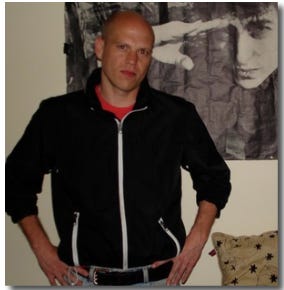In the spring of 2012, I met Richey Piiparinen, at an event at Cleveland’s Happy Dog, a bar founded by our mutual friend Sean Watterson, who left finance and life in New York to move back home to Cleveland and start something new. Richey and I started talking about our shared interest in Cleveland, urbanism, and writing, the kinds of decisions people like Sean were making, the way the national media was writing about a supposed “Cleveland renaissance”. And then we decided to do a fairly ridiculous thing: put together a book of essays about Cleveland. We started it that June, and by September the book, Rust Belt Chic: The Cleveland Anthology, was published.
One of the starkest memories of how intense and hard was that project is when the books arrived: 2,000 of them I think (we had taken an enormous number of preorders through a hastily produced online store)? They were delivered to Richey’s apartment, on Clifton Boulevard. It had a very long, narrow, potholed driveway. The apartment was up two flights of stairs, which turned several times in right angles. The truck couldn’t get into the driveway. So the driver deposited dozens of heavy cartons on the sidewalk. I carried them all down that drive, and up those many turning stairs. It was mid-August; hot. (Richey was fond of tying the city’s manufacturing ethos even to the intellectuals in town: “we work hard; we lift heavy boxes; we make things”).2
But before long all the boxes were carried back down and sold; we did a second printing, which I stored in my garage. People kept buying the book, asking Richey and I do events. The launch party (at the Happy Dog, of course), was drunken and fabulous. It was really a very gritty, DIY, Rust Belt-y, passionate time, the sort of thing that would only be possible in a depleted, burdened city filled with enough readers and advocates to lift up creative projects (Here’s a representative piece written before the launch). And for me, it was incredibly fun to do all this with a partner, someone who was as native a son of Cleveland as could be. He was the one who came up with the title, from a comment Joyce Braebner, Harvey Pekar’s widow, once made about easterners who come to Cleveland to gawk, sneer, and appropriate. ( Richey put it this way: “Rust Belt Chic is about leveraging a person’s attachment to place to get them reinvested in that place. It is — ultimately — turning the Rust Belt moniker from a pejorative to a badge of honor.”)3
Richey and I continued to collaborate for awhile; he was part of the original team that founded Belt Magazine, which launched in September 2013 to continue the work of that first book. But we fell out shortly thereafter, a move I own, based on what I felt was an uneven division of labor, perhaps the least surprising result of a partnership such as ours.
A few years ago Richey was diagnosed with terminal cancer; he outlasted all the doctor’s predictions, and wrote about his experience, continuing to merge the personal with the Cleveland. His time finally ran out yesterday, as I learned from an email from a Cleveland journalist looking for a headshot.5 (The only obituary I can find so far is paywalled, but Steve Litt, the estimable architecture critic of the Plain Dealer posted this.)6
I adored the crystallized time when Richey and I rode a wave of intense activity and meaningful work together, carried along by a surprising swell of support from our community. It was truly a moment. Those are rare.
Richey should have had more time, but he made the best of the time he had, his prodigious energy all the more astonishing given the difficult hand he was dealt, even before the diagnosis. Thanks, Richey, for your dedication and sense of purpose. You did good. You will be missed, and your city will be poorer for your loss.
Richey the summer we worked together (then a complete unknown?).
No, this never could apply to me, Jewish, parents raised in New York and New Jersey, then a professor at Oberlin College, could it. I was never of the world we were describing; Richey was. But it’s also true that Richey had to work the day the boxes were delivered, so it fell to me to move every single one of them up to his apartment.
This was 2012, long before the Rust Belt and Trump Country became entangled terms.
I have such strong and fond memories of designing this cover (from the first edition, now OOP).
I will go through all the old files and clippings and find more mementos from that time, promise, just not yet.
There are now three people, all Cleveland boosters and intensely creative men, who have been close friends of mine, and have died young. It’s difficult not to analyze this, to set it next to the discourse of “deaths of despair”, but of such moves I am wary, tempting as they may be, if only to help me make meaning.




Please, Please, Please, bring it back into print for those of us who missed it. Thank you.
May his memory be a blessing.